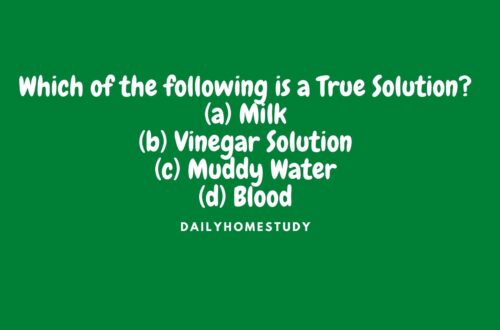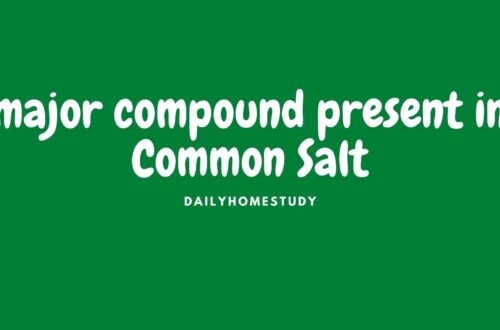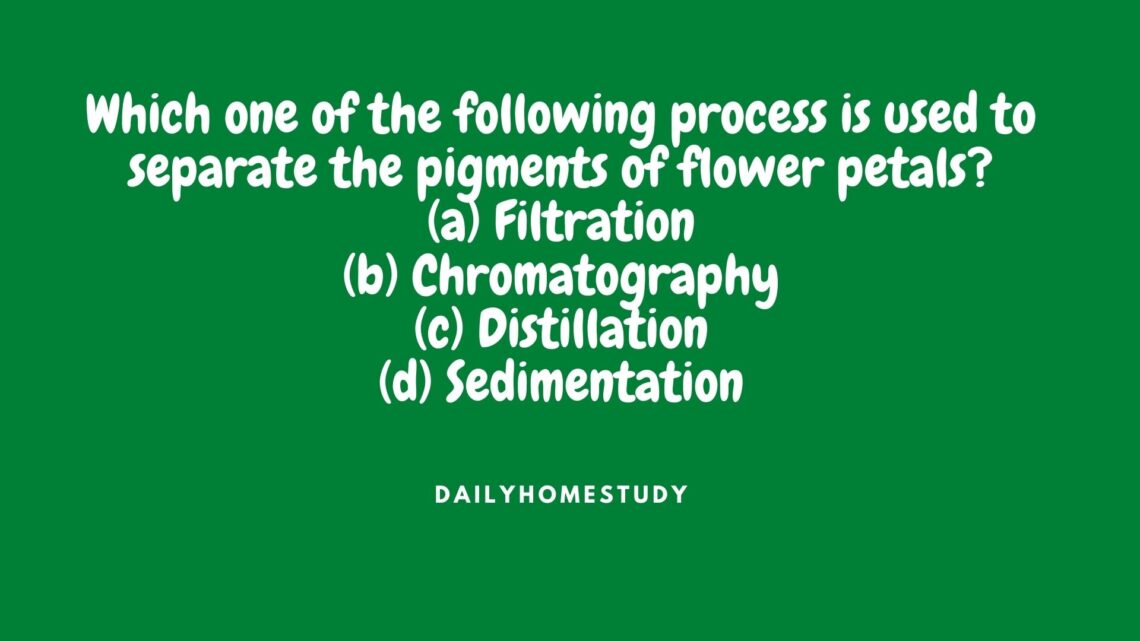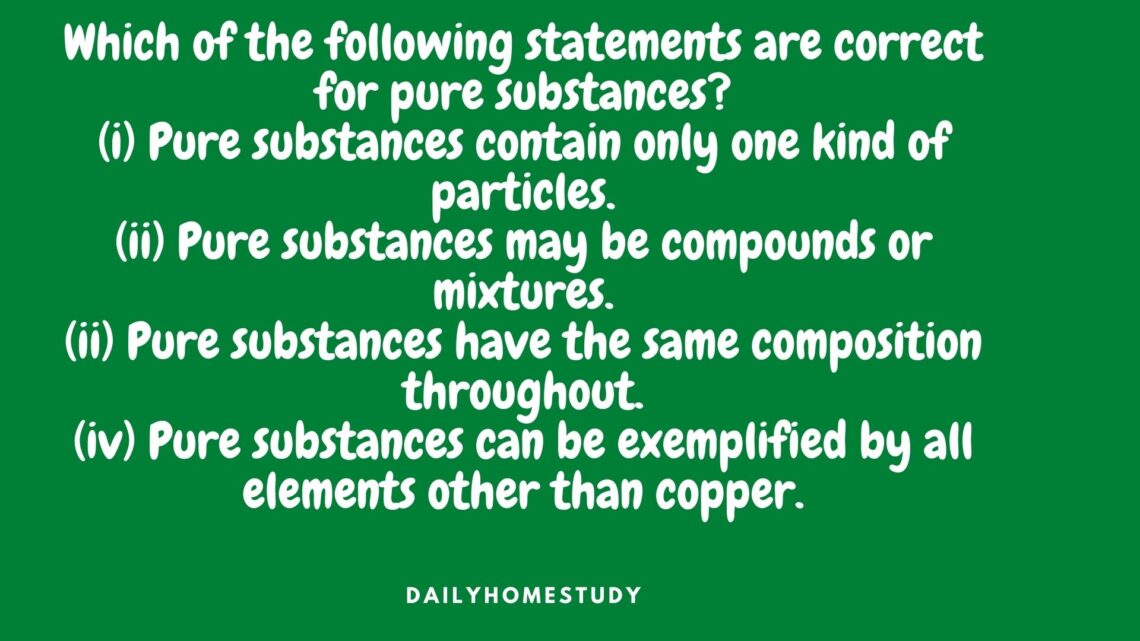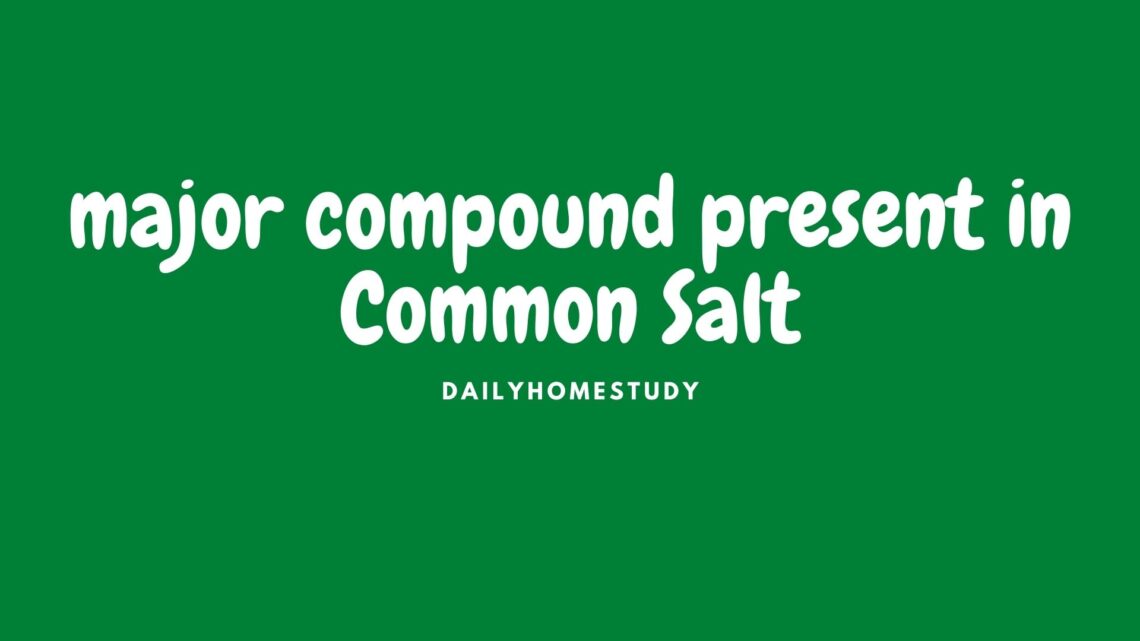-
A Mixture is made up of mcq
Matter Around Us Pure? is the chapter 2 of Class 9 NCERT book. The Multiple Choice Question (MCQ) Question is given below for Class 9 Chapter 2 Is Matter Around Us Pure? Question A Mixture is made up of (a) two or more elements (b) two or more compounds (c) both (a) and (b) (d) none of these Answer Option (b) is the right answer. Explanation A mixture contains two elements or two compounds or an element and a compound. FAQ What is element? Element is known as chemical element in Chemistry. Element is any substance that cannot be decomposed into simpler substances by ordinary chemical processes. Elements are the…
-
A Separating funnel is used for separating
Matter Around Us Pure? is the chapter 2 of Class 9 NCERT book. The Multiple Choice Question (MCQ) Question is given below for Class 9 Chapter 2 Is Matter Around Us Pure? Multiple Choice Question A Separating funnel is used for separating (a) Immiscible liquids (b) Solids (c) Miscible liquids (d) None of these Answer Option (a) is the right answer. Explanation We can separate only immiscible liquids with the help of separating funnel. FAQ Q 1. How to Separate the mixture of two immiscible liquids? For the separation of a mixture of two immiscible liquids, we use a separating funnel. For example, we want to separate kerosene from water…
-
Which of the following is a True Solution?
Matter Around Us Pure? is the chapter 2 of Class 9 NCERT book. The Multiple Choice Question (MCQ) Question is given below for Class 9 Chapter 2 Is Matter Around Us Pure? Question Which of the following is a True Solution? (a) Milk (b) Vinegar Solution (c) Muddy Water (d) Blood Answer Option (b) is the right answer. Explanation Vinegar solution is an acetic acid solution. It dissolves in water and gives a true solution. FAQ Q 1: What is a True Solution? Ans: A true solution is a homogeneous mixture with consistent properties. Filtration cannot separate the solute from the solution in a true solution. The solute’s particle size…
-
Which Process is Used to Separate the Pigments of flower petal?
Matter Around Us Pure? is the chapter 2 of Class 9 NCERT book. The Multiple Choice Question (MCQ) Question is here for Class 9 Chapter 2 Is Matter Around Us Pure? Question Which one of the following process is used to separate the pigments of flower petals? (a) Filtration (b) Chromatography (c) Distillation (d) Sedimentation Answer The right option is (b) – Chromatography Explanation Chromatography is used to separate the pigments of flower petals. The pigments of flower petals is separated with the process of chromatography.
-
Which of the following statements are correct for pure substances?
Matter Around Us Pure? is the chapter 2 of Class 9 NCERT book. The MCQ Question is given below for Class 9 Chapter 2 Is Matter Around Us Pure? Question Which of the following statements are correct for pure substances? (i) Pure substances contain only one kind of particles. (ii) Pure substances may be compounds or mixtures. (ii) Pure substances have the same composition throughout. (iv) Pure substances can be exemplified by all elements other than copper. Options (a) (i) and (ii) (b) (i) and (iii) (c) (ii) and (iii) (d) (iii) and (iv) Answer Option (b) is the right answer. Explanation: Pure substances contain one type of particles and…
-
What is the major compound present in Common Salt?
Matter Around Us Pure? is the chapter 2 of Class 9 NCERT book. The MCQ Question is given below for Class 9 Chapter 2 Is Matter Around Us Pure? Question What is the major compound present in Common Salt? (a) MgCl2 (b) NaCl (c) CaCl 2 (d) KCL Answer The right option is (b) – NaCl FAQ What is NaCl? NaCl is the chemical formula of Sodium chloride. It is commonly known as salt. It representing a 1:1 ratio of sodium and chloride ions. With molar masses of 22.99 and 35.45 g/mol respectively, 100 g of NaCl contains 39.34 g Na and 60.66 g Cl. Is NaCl an ionic compound?…
-
Select the Separation Technique
Select the Separation Technique Question: Which separation techniques will you apply for the separation of the following? a) Ammonium chloride from a mixture containing sodium chloride and ammonium chloride. b) Different pigments from an extract of flower petals. c) Oil from water d) Iron pins from sand. e) Fine mud particles suspended in water f) Wheat rains from husk g) Tea leaves from Tea h) Butter from curd i) Small pieces of metal in the engine oil of a car. j) Sodium chloride from its solution in water Answer The separation techniques to be applied are as following a) Sublimation b) Chromatography c) Using separating funnel d) Magnetic separation e)…


